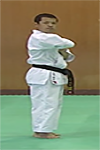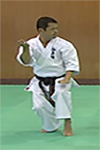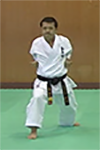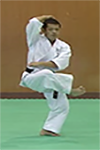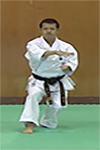Saiha - 砕破
Saiha - 砕破
video
instructions
Video
source Youtube
Information Kata
Documentation
Kihon Waza
Dachi Waza
 Fudo Dachi
Fudo Dachi
 Mosubi Dachi
Mosubi Dachi
 Joi Dachi
Joi Dachi
 Heiko Dachi
Heiko Dachi
 Heisoku Dachi
Heisoku Dachi Kiba Dachi
Kiba Dachi
 Nek Ashi Dachi
Nek Ashi Dachi
 Zenkutsu Dachi
Zenkutsu Dachi
 Sanchin Dachi
Sanchin Dachi
Te Waza
 Hiji Yoko Jodan Ate
Hiji Yoko Jodan Ate
 Uraken Sayu Ganmen Uchi
Uraken Sayu Ganmen Uchi
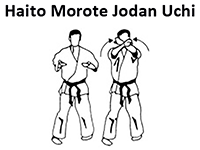 Haito Morote Jodan Uchi
Haito Morote Jodan Uchi
 Seiken Morote Jodan Tsuki
Seiken Morote Jodan Tsuki
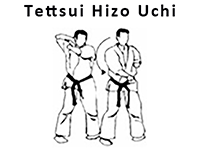 Tettsui Hizo Uchi
Tettsui Hizo Uchi
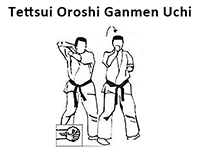 Tettsui Oroshi Ganmen Uchi
Tettsui Oroshi Ganmen Uchi
 Seiken Shita Tsuki
Seiken Shita Tsuki
 Seiken Chudan Gyaku Tsuki
Seiken Chudan Gyaku Tsuki
 Chudan Ura Yonhon Nukite
Chudan Ura Yonhon Nukite
Uke Waza
 Shotei Gedan Barai
Shotei Gedan Barai
 Haito Uchi Uke
Haito Uchi Uke
 Kake Uke
Kake Uke
 Shuto Mae Mawashi Uke
Shuto Mae Mawashi Uke
Geri Waza
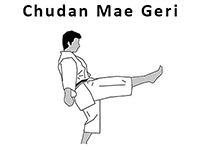 Chudan Mae Geri
Chudan Mae Geri
Kihon Jutsugo
Kamae - 構え, means posture or base. Kamae is to be differentiated from the word Dachi - 立ち. Dachi refers to the position of the body from the waist down, Kamae refers to the posture of the entire body, as well as encompassing one's mental readiness.Kamae
Mokusō - 黙想, means meditation, part of the training of mushin; the call to meditate.Mokuso
Hajime - 始め, means begin.Hajime
To look at the sky.Kanku
Seika tanden 臍下丹田, Lower abdomen; center of the abdomen; Litalary: 'the red rice paddy below the navel'.Seika Tanden
Spirit unification; the union of breath and energry in a cry.Kiai
Hikite - 引き手 means drawing hand: Hiku - 引き, to draw or pull, and Te - 手, the hand.Hikite
Revolving hands.Tensho
Foot Sweep.Ashi Barai
Ibuki is karate’s hard breathing method. Ibuki breathing is a study of tension, which is necessary to truly understand relaxation. While ibuki breathing serves as a dynamic tension exercise, its true value is ki development, since it teaches the breathing control necessary for kiai. Ibuki breathing is performed in two ways, one long, and one short. Ibuki
Naore - 直れ, is a command to go back into the beginning Kamae.Naore
Yasumi - 休み, is a command to rest or relax.Yasume










